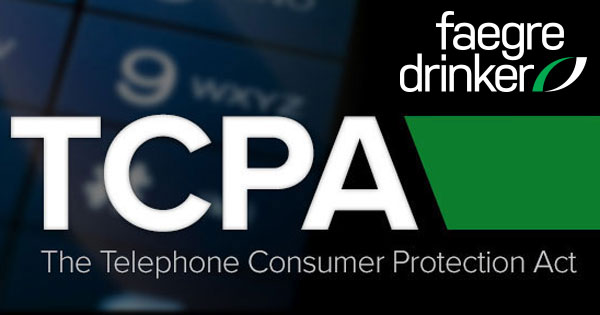A federal district court in the Southern District of Florida joined a list of courts that have found a web-based text messaging platform to fall outside the purview of the TCPA due to the amount of human intervention required to send a text message. In Ramos v. Hopele of Fort Lauderdale, LLC, et al., the plaintiff brought a putative class action alleging that the defendants violated the TCPA by sending her unsolicited text messages. The parties each moved for summary judgment. The plaintiff argued that the texting platform was, as a matter of law, an ATDS. The defendants argued that the web-based texting platform at issue did not meet the statutory definition of an ATDS because it cannot send text messages without human intervention.
At the outset, the court walked through the TCPA’s regulatory history, highlighting the FCC’s treatment of the types of equipment that fall under the purview of the statute in a series of orders from 2003 to 2015. The court then addressed the consolidated appeal of the FCC’s 2015 Order before the D.C. Circuit in ACA International v. FCC. The parties disputed the import of ACA International. Plaintiff argued that the decision was not binding. Defendant argued that, not only was the decision binding, it invalidated all prior FCC Orders pertaining to the meaning of ATDS. Unsurprisingly, the court concluded that ACA International is binding outside of the D.C. Circuit. However, contrary to a growing number of courts across the country, the court found that, while ACA International invalidated portions of the FCC’s 2015 Order pertaining to ATDS, it left intact the FCC’s prior Orders. Against this backdrop, the court concluded that an ATDS “covers any equipment that has the specified capacity to generate numbers and dial them without human intervention . . . .”
Turning to the merits of the parties’ arguments regarding CallFire’s EZ Texting platform, the court noted that the primary issue in determining whether the system qualified as an ATDS was the amount of human intervention necessary to send the text messages. The court dismissed plaintiff’s argument that dialing equipment is an ATDS unless human intervention occurs at the exact moment a text is sent. Rather, the court reasoned that “[w]hat constitutes the amount of human intervention required to take a device out of the category of an autodialer is a mixed question of fact and law” that is determined on a case-by-case basis.
Here, the evidence showed that the web-based text messaging system could not send a text without a series of manual steps. Specifically, one of the defendant’s managers had to: (1) create a list of customer phone numbers based on various criteria; (2) remove any landline phone numbers that could not receive text messages; (3) upload the cell phone numbers onto the text messaging system’s website; (4) draft the message; (5) program the date and time of delivery; and (6) select the send button. The court held that a significant amount of human interaction was necessary to send messages through the system, and the system was therefore not an ATDS. In reaching this conclusion, the court relied on several cases involving web-based text messaging platforms with similar features that were found not to be an ATDS because of the level of human intervention required. See Jenkins v. mGage, LLC, No. 14-2791, 2016 WL 4263937 (N.D. Ga. Aug. 12, 2016; Luna v. Shac, LLC, 122 F. Supp. 3d 936 (N.D. Cal. 2015); Blow v. Bijora, Inc., 191 F. Supp. 3d 780 (N.D. Ill. 2016); Herrick v. GoDaddy.com LLC, 312 F. Supp. 3d 792 (D. Az. 2018).

